#nazi party
Text
Ahem…
Fascism is dictatorship. It is authoritarian, totalitarian, tyrannical
Communism is just rebranded fascism with a committee rather than a dictator
Socialism is just communism-lite
*but it will go full force communism in a very short time
The Nazi party is just rebranded fascism with a socialist take
None of the above are economic systems, or any sort of systems of government. They are simply the very, very few ruling the very, very, very many… and with tech on their side this time, if they are not stopped NOW, there will be no stopping them later
Anarcho-literally-anything will descend very quickly into authoritarianism, totalitarianism… tyranny… and you will not be able to organize quick enough nor effectively enough to stop it
Change my mind…
… and quit playing cute little childish fucking games with our freedom

Angie/Maddie🦇❥✝︎🇺🇸
_____________________________________________________________
extra credit:

#fjb#fascism#communism#socialism#nazi party#Marxism#the end of the human race#treason is not cute#you are not being clever#solo roba di angie#non solo roba da angie#born a witch#vampire#here i am#2a#1a
111 notes
·
View notes
Text
London’s Metropolitan Police has come under criticism after footage emerged showing an officer telling a Jewish woman that swastikas seen at a pro-Palestinian protest should be “taken in context”.
A clip shared widely online appeared to show a London police officer suggesting that under certain circumstances swastikas paraded in public could be legal, despite Britain’s tough restrictions on so-called hate speech.
In the clip filmed at a pro-Palestinian rally on Saturday, the officer was heard telling a Jewish woman: “I don’t have an in-depth knowledge of signs and symbols. I know the swastika was used by the Nazi party during their inception and the period of them being in power in Germany in 1934… I’m aware of that.”
“So under what context is a swastika not disrupting public order? Could you just explain under what symbol that is not disrupting public order?” the woman asks.
“I haven’t said anything about it that it is or it isn’t. Everything needs to be taken in context doesn’t it,” the officer replied.
“I’m confused about in what context a swastika is not anti-Semitic. This is what I want to know,” the exasperated woman shot back.
“Why is a swastika not immediately anti-Semitism? Why does it need context? This is what I’m confused about. This isn’t even about Israel. In what context is a swastika not anti-Semitic and disruptive to public order?” she questioned.
“I suppose to some I don’t know how everybody would feel about that sign. Now if you came up to me and you felt mass alarm and distress about a symbol that someone was…” the officer responded.
36 notes
·
View notes
Text

I saw this picture a while back, and I had made a note to myself, to find out more about this picture, about this man, which made this photograph such an iconic photo. As it so happens, the photo was taken in June of 1936, so this would be a good time to tell this story.
First, some background: The photograph was taken on June 13, to be exact. Adolf Hitler was speaking at a rally at a shipyard, and, as such, during that time, anytime Hitler spoke, according to Nazi Germany law, each citizen there had to stand and salute "Der Führer". If you did not salute, you could be punished. Some people, whose religions conflicted with the law, would be arrested and their children attending school were expelled, detained, and separated from their families.
In the picture, however, you can clearly see amidst the sea of "Heil Hitler's!", one man stood resolute, alone in his defiance.
Now, many times when I research a story, information leads me to different directions. This is one such story. You see, there seems to be some dispute as to who the man in the picture is - one woman claimed it was her father, August Landmesser, and she would write a book about it. Another person claimed it was his father, Wegert Gustav, and his son would provide proof that his father did work at the shipyard and objected to Nazism on grounds of his Christian faith.
Both stories are compelling. But, since I've been accused of writing too long for this format, Wegert Gustav's story will have to wait for another time. For this story, I will focus on August Landmesser, who many other publications have identified as the man in the picture.
I've chosen to tell Landmesser's story because of its relevance today. Landmesser started out as a loyal Nazi, who joined the Nazi party in 1931, a mistake he would regret for the rest of his life. After joining the Nazi party, Landmesser would fall in love - with a Jewish woman named Irma Eckler. He would soon discover what the Nazi party was all about and he and his family would get caught up in its deadly race laws.
After the Nazi party found out Landmesser was engaged to a Jewish woman, he would be expelled from the party. But, it didn't end there.
When Landmesser and Eckler tried to file a marriage application in Hamburg, the union would be denied under the newly enacted Nuremberg Laws. In 1935, the couple, amidst all the turmoil, would welcome their first daughter, Ingrid.
By this time, Landmesser was well informed about the Nazi party, and, so supposedly, on June 13, 1936, when given an opportunity to express his thoughts about Hitler and the Nazi party and what it was doing to his homeland, he decided to give his crossed-arm stance during Hitler's speech at the shipyard, to be captured forever in the iconic photograph, according to his daughter.
In 1937, Landmesser decided Nazi Germany was no place to raise his family, he felt unsafe, and all the stories of violence against anyone who disagreed with "Der Führer" frightened him. He decided to flee to Denmark with his family, but, he would be detained at the border. He would be accused of "dishonoring the race," or "racial infamy," under the Nuremberg Laws.
But, he would refuse to abandon his wife and child, ignoring Nazi wishes to end their relationship. He would be arrested, sent to a Nazi concentration camp to serve three years.
He would never again see the woman he loved nor see his daughter(s) (his wife at the time was pregnant with a second child) grow up.
His wife would be arrested by the secret state police, giving birth to the couple's second child, Irene, in prison. Afterwards, she would be sent to an all-women's concentration camp, then supposedly transferred in 1942 to what the Nazi's called a "euthanasia center" where she was murdered with 14,000 others.
Landmesser, lost without his wife and children, would be released only to be drafted into war in 1944, where he would be declared missing in action in Croatia and presumed dead.
The children of the couple would survive.
The photo of that moment in 1936 would lay unnoticed for nearly 55 years, until 1991, when a German newspaper republished the photograph, asking its readers whether anyone could identify the lone man in the picture.
During that time, one of the couple's daughters, Irene Eckler, had been researching her family, trying to gain an understanding of what happened to them. She and her sister had been separated, but had survived the war without their parents. She had found some information at Fasena, an educational site on the Nazi death camp at Auschwitz. She then saw the newspaper article and identified the photograph.
She would then publish her findings in a book titled, "Irene Eckler: A Family Torn Apart by Rassenschande (race disgrace)".
The picture would re-surface again after it was published by the Washington Post after the Japanese earthquake and tsunami, going viral online.
There is still some uncertainty whether the man in the picture is August Landmesser (that may be another story in the future), but there is no uncertainty as to what happened to Landmesser, what happened to many others during that time.
As long as I am able, I will continue to share these stories, to share awareness, to share some understanding, to ensure families, are no longer separated.
The Jon S. Randal Peace Page
60 notes
·
View notes
Text

Hitler Jugend, location and date unknown
11 notes
·
View notes
Text

This is a still from the Marshall Curry documentary A Night at the Garden, about a rally held at Madison Square Garden in 1939 by the German-American Bund, or the American Nazi Party. It was billed as a celebration of “Americanism” on George Washington’s birthday, February 20.
Twenty thousand people heard Fritz Kuhn, the group's Bundesführer, or leader, say, "“We, with American ideals, demand that our government shall be returned to the American people who founded it.” After joking about the negative light in which he had been portrayed by the “Jewish-controlled press,” he went on to explain that those ideals included a “socially just, white, Gentile-ruled United States.”
The 7-minute documentary can be seen below.
youtube
#old New York#1930s#Nazism#fascism#white supremacy#Nazi Party#anti-Semitism#Hitler#Marshall Curry#A Night at the Garden#Madison Square Garden#February 20#Feb. 20#German-American Bund#American Nazi Party#Fritz Kuhn#the more things change ...#Youtube
109 notes
·
View notes
Text

(above) Das Ausstellungsgebäude "Entartete Kunst" in Berlin, 1938
The "Degenerate Art" exhibition, initiated by Minister of Propaganda Joseph Goebbels and directed by Adolf Ziegler, President of the Reich Chamber of Fine Arts, opened in Munich on July 19, 1937. It showed 650 confiscated works of art from 32 German museums. Over three million people visited this exhibition, which was shown in twelve other cities by April 1941. Works of art and cultural currents that were not in harmony with the National Socialists' understanding of art and ideals of beauty - Expressionism, Impressionism, Dadaism, New Objectivity, Surrealism, Cubism or Fauvism - were considered "degenerate", "sick" or "Jewish-Bolshevist". These works were presented with photos of deformed people to evoke disgust and trepidation in visitors. At the same time, the Munich "House of German Art" showed the "Great German Art Exhibition" with "German" art.
(below) Führer zur Ausstellung "Entartete Kunst". Verlag für Kultur und Wirtschaftswerbung; Berlin, 1937

Guide to the exhibition "Degenerate Art" Title picture based on the sculpture 'The New Man' by Otto Freundlich
Works of art and cultural currents that were not in harmony with the National Socialists' understanding of art and ideals of beauty [Expressionism, Impressionism, Dadaism, New Objectivity, Surrealism, Cubism or Fauvism] were considered "degenerate", "sick" or "Jewish-Bolshevist". These works were presented with photos of deformed people to evoke disgust and anxiety in visitors. At the same time, the Munich House of "German Art" showed the "Great German Art Exhibition" with "German" art. | Lebendiges Museum online
#degenerate art#Entartete Kunst#1930s#nazism#nazi party#censorship#kunst#art#art history#history of art
29 notes
·
View notes
Text
A sad day for the democrat party. After all these years they're reviving the party.
As always, never buy anything made in china. Don't ever trust a democrat and NEVER leave your child alone with one.
#trump 2024#joe biden#nwo#wef#Nazis#Nazi party#ww2#ww3#election interference#letitia james#fani willis#swastika#antisemitism
2 notes
·
View notes
Text

Title/Name: Adolf Hitler, (1889–1945).
Bio: Austrian-born German politician who was the dictator of Germany from 1933 until his suicide in 1945. He rose to power as the leader of the Nazi Party, becoming the chancellor in 1933 and then taking the title of Führer und Reichskanzler in 1934.
Country: Austria
Wojak Series: Chad (Variant)
Image by: Unknown
Main Tag: Hitler Wojak
#Wojak#Adolf Hitler#Adolf Hitler Wojak#Hitler#Chad#Chad Series#Chad Wojak#Austria#Politics#politician#dictator#Nazi Führer#Nazi Party#Nazi#Writer#Author#Writer Author#Hitler Wojak#Gray#White
3 notes
·
View notes
Text
For all those who support that nutcase I recently posted about who claimed that trans people were the first victims of the holocaust here’s some actual history.
The persecution of those with mental and physical disabilities by the Nazi Party began in July 1933 with the ‘Law for the Prevention of Hereditarily Diseased Offspring’. The law enforced compulsory sterilisation for those with conditions believed to be hereditary including schizophrenia, epilepsy, Downs Syndrome and even alcoholism. The task of locating those to be sterilised was carried out by special courts called the ‘Hereditary Health Courts’. They examined institutions such as hospitals, schools and nursing homes. Between 1933 and 1939, an estimated 360,000 people were sterilised.
The first killing of a disabled child took place in July 1939. The victim was an infant named Gerhard Kretschmer, who had been born blind with physical and development disabilities. The ‘trial’ took place in 1938 after the parents asked for a ‘mercy killing’ of their son. Hitler then asked for the programme to be extended to all similar cases.

The Reich Committee for the Scientific Registering of Hereditary and Congenital Diseases was established in August 1939 by Hitler’s personal physician Karl Brandt. Its aim was to identify all infants and babies who should be ‘euthanised’. The killings of those considered lebensunwertes lebens (Life unworthy of life) began in 1939. By 1941, over 5,000 chidlren identified by the committee had been murdered. Soon, the policy extended to adults and became known as ‘Aktion T4’.

Historians estimate 250,000 to 300,000 people were killed as part of Aktion t4 due to their mental or physical disabilities.
THE HOLOCAUST
To carry out the programme, six euthanasia centres were established at six hospitals in Germany: Bernburg, Brandenburg, Grafeneck, Hadamar, Hartheim and Sonnestein. There were also centres in Austria. These centres played a crucial role in the development of the Holocaust.

The gassings of those as part of Aktion T4 began in January 1940. Those chosen would be bussed to the euthanasia centres where a fake medical examination would take place before they would be sent for a ‘shower’. These were in fact the gas chambers. Most of those killed were murdered within 24 hours of their arrival at the centres. Their families would then be sent a falsified death certificate along with an urn containing ash (as the victims would be cremated as a group).
As the German army occupied Europe and began filling ghettos with Jewish citizens, the Nazis searched for the most efficient way to kill as many as possible. In the East, mass shootings of Jewish and other ‘undesirable’ people by the Einsatzgruppen was slow, expensive and stressful for those carrying out the killings. By June 1941, the Nazis began to experiment with mobile gas vans as a new, less costly method. The Einsatzgruppen proceeded to gas hundreds of thousands of people, mostly Jews, Roma and mentally ill people.
The use of gas to kill disabled people and POWs as part of Aktion T4 experiments were also carried out in Auschwitz in September 1941 with Zyklon B gas. This process was found to be the most effective and went on to kill millions of people in the Nazi death camps.

Two of the commandants of the euthanasia centres, Christian Wirth and Franz Stangl, later become commandants of the extermination centres using what they had learnt to perpetrate the Holocaust.
PREJUDICE TODAY
Prejudice regarding both mental and physical disabilities is still an issue in many societies across the world, including here in Britain. This month is UK Disability History Month, which seeks to mobilize the history of disabled persons’ persecution and struggles in order to promote better treatment and ensure equality and basic human rights in our society today.
#Nazi Party#July 1933#Law for the Prevention of Hereditarily Diseased Offspring#Forced sterilization#Hereditary Health Courts#Rest In Peace Gerhard Kretschmer#The Reich Committee for the Scientific Registering of Hereditary and Congenital Diseases#August 1939#Karl Brandt#lebensunwertes lebens (Life unworthy of life)#Aktion T4
8 notes
·
View notes
Text


Six million Jews murdered. Millions more stripped of their livelihoods, their communities, their families, even their names.
The horrors of the Holocaust are often expressed in numbers that convey the magnitude of Nazi Germany’s attempt to annihilate Europe’s Jews.
The Nazis and their collaborators killed millions of people whom they perceived as inferior—including Jehovah’s Witnesses, gay men, people with disabilities, Slavic and Roma people, and Communists.
However, historians use the term “Holocaust”—also called the Shoah, or “disaster” in Hebrew—to apply strictly to European Jews murdered by the Nazis between 1933 and 1945.
No single statistic can capture the true terror of the systematic killing of a group of human beings—and given its enormity and brutality, the Holocaust is difficult to understand.
How did a democratically elected politician incite an entire nation to genocide? Why did people allow it to happen in plain sight? And why do some still deny it ever happened?


European Jews before the Holocaust
By 1933, about nine million Jews lived across the continent and in every European nation.
Some countries guaranteed Jews equality under the law, which enabled them to become part of the dominant culture.
Others, especially in Eastern Europe, kept Jewish life strictly separate.
Jewish life was flourishing, yet Europe’s Jews also faced a long legacy of discrimination and scapegoating.
Pogroms—violent riots in which Christians terrorized Jews—were common throughout Eastern Europe.
Christians blamed Jews for the death of Jesus, fomented myths of a shadowy cabal that controlled world finances and politics, and claimed Jews brought disease and crime to their communities.
The rise of Adolf Hitler
It would take one man, Adolf Hitler, to turn centuries of casual anti-Semitism into genocide.
Hitler rose to power as leader of the National Socialist German Workers’ Party, also known as the Nazi Party, in the 1920s.
Hitler harnessed a tide of discontent and unrest in Germany, which was slowly rebuilding after losing the First World War.
The nation had collapsed politically and economically, and owed heavy sanctions under the Treaty of Versailles.
The Nazi party blamed Jews for Germany’s troubles and promised to restore the nation to its former glory.
Hitler was democratically elected to the German parliament in 1933, where he was soon appointed as chancellor, the nation’s second-highest position.
Less than a year later, Germany’s president died, and Hitler seized absolute control of the country.

The early Nazi regime
Immediately after coming to power, the Nazis promulgated a variety of laws aimed at excluding Jews from German life—defining Judaism in racial rather than religious terms.
Beginning with an act barring Jews from civil service, they culminated in laws forbidding Jews from German citizenship and intermarriage with non-Jews.
These were not just domestic affairs: Hitler wanted to expand his regime and, in 1939, Germany invaded Poland.
It marked the beginning of the Second World War—and the expansion of the Nazis’ anti-Jewish policies.
German officials swiftly forced hundreds of thousands of Polish Jews into crowded ghettoes, and with the help of locals and the German military, specially trained forces called the Einsatzgruppen began systematically shooting Jews and other people the regime deemed undesirable.
In just nine months, these mobile murder units shot more than half a million people in a “Holocaust by bullets” that would continue throughout the war.
But Hitler and his Nazi officials were not content with discriminatory laws or mass shootings.
By 1942, they agreed to pursue a “final solution” to the existence of European Jews:
They would send the continent’s remaining 11 million Jews east to death camps where they would be forced into labor and ultimately killed.
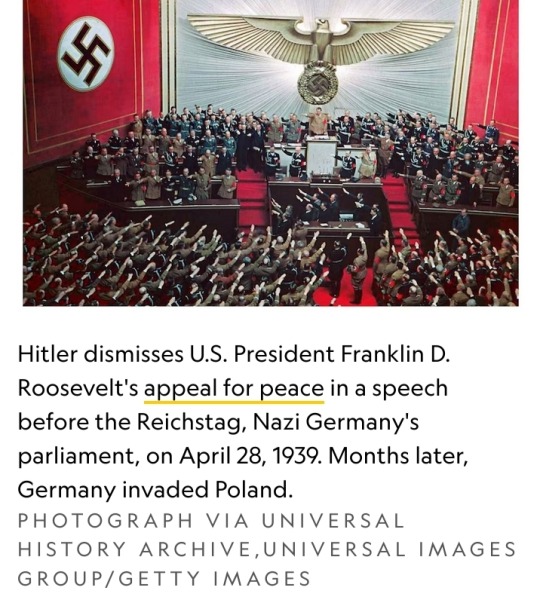
Genocide in plain sight
By characterizing their actions as the “evacuation” of Jews from territories that rightfully belonged to non-Jewish Germans, the Nazi operation took place in plain sight.
Though thousands of non-Jews rescued, hid, or otherwise helped those targeted by the Holocaust, many others stood by indifferently or collaborated with the Nazis.
With the help of local officials and sympathetic civilians, the Nazis rounded up Jews, stripped them of their personal possessions, and imprisoned them in more than 44,000 concentration camps and other incarceration sites across Europe.
Non-Jews were encouraged to betray their Jewish neighbors and move into the homes and businesses they left behind.
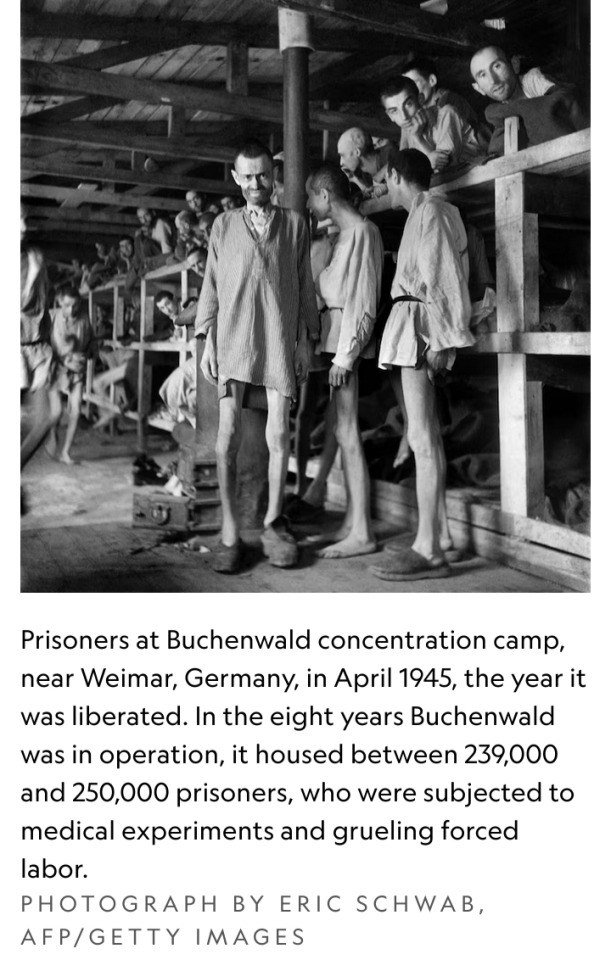
Dachau, which opened near Munich in 1933, was the first concentration camp.
Five others—Auschwitz-Birkenau, Chelmno, Belzec, Sobibor, and Treblinka—were designated as killing centers, where most Jews were immediately murdered upon arrival.
The killings took place in assembly-line fashion:
Mass transports of Jews were unloaded from train cars and “selected” into groups based on sex, age, and perceived fitness.
Those selected for murder were taken to holding areas where they were told to set aside their possessions and undress for “disinfection” or showers.
In reality, they were herded into specially designed killing chambers into which officials pumped lethal carbon monoxide gas or a hydrogen cyanide pesticide called Zyklon B that poisoned its victims within minutes.

Credit: Zyklon B (Wikipedia)
The earliest Holocaust victims were buried in mass graves. Later, in a bid to keep the killings a secret, corpses were burned in large crematoria.
Some Jews were forced to participate in the killings, and then were themselves executed to maintain secrecy.
The victims’ clothing, tooth fillings, possessions, and even hair was stolen by the Nazis.
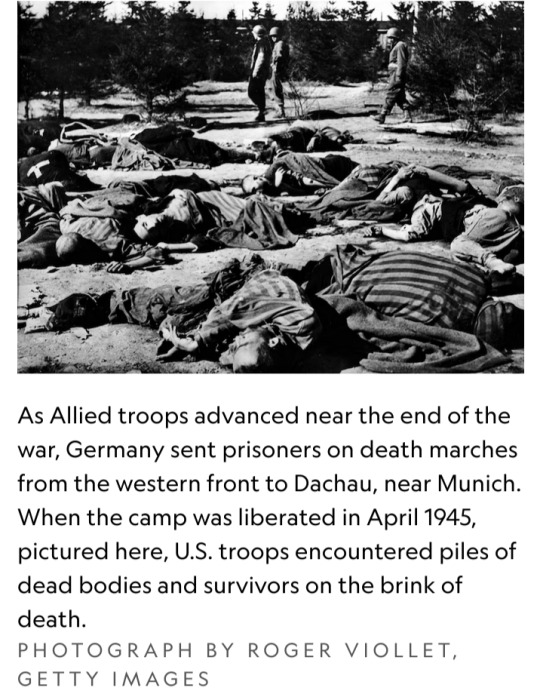
Life in the camps
Those not chosen for death were ritually humiliated and forced to live in squalid conditions.
Many were tattooed with identification numbers and shorn of their hair.
Starvation, overcrowding, overwork, and a lack of sanitation led to rampant disease and mass death in these facilities.
Torture tactics and brutal medical experiments made the camps a horror beyond description.
“It is not possible to sink lower than this; no human condition is more miserable than this, nor could it conceivably be so,” wrote Auschwitz survivor Primo Levi in his 1947 memoir.
“Nothing belongs to us any more…if we speak, they will not listen to us, and if they listen, they will not understand. They will even take away our name.”
But despite almost inconceivable hardships, some managed to resist.
“Our aim was to defy Hitler, to do everything we [could] to live,” recalled Majdanek and Auschwitz survivor Helen K. in a 1985 oral history. “He [wanted] us to die, and we didn’t want to oblige him.”
Jews resisted the Holocaust in a variety of ways, from going into hiding to sabotaging camp operations or participating in armed uprisings in ghettoes and concentration camps.
Other forms of resistance were quieter, like stealing food, conducting forbidden religious services, or simply attempting to maintain a sense of dignity.

The aftermath of the Holocaust
As World War II drew to a close in 1944 and 1945, the Nazis attempted to cover up their crimes, burning documents, dismantling death camp sites, and forcing their remaining prisoners on brutal death marches to escape the advancing Allies.
They didn’t succeed: As they liberated swaths of Europe, Allied troops entered camps piled high with corpses and filled, in some cases, with starving, sick victims.
The evidence collected in these camps would become the basis of the Nuremberg Trials, the first-ever international war crimes tribunal.
In the war’s aftermath, the toll of the Holocaust slowly became clear.
Just one out of every three European Jews survived, and though estimates vary, historians believe at least six million Jews were murdered.
Among them were an estimated 1.3 million massacred by the Einsatzgruppen; approximately a million were murdered at Auschwitz-Birkenau alone.
Many survivors had nowhere to go. Poland had Europe’s largest Jewish population before the war but lost 93 percent of that population in just five years.
Entire villages and communities were wiped out and families scattered across Europe.
Labeled “displaced persons,” survivors attempted to rebuild their lives. Many left Europe for good, emigrating to Israel, the United States, or elsewhere.
Holocaust denial
Despite the enormity of evidence, some people sowed misinformation about the Holocaust, while others denied it happened at all.
Holocaust denial persists to this day, even though it is considered a form of antisemitism and is banned in a variety of countries.
How to counter the hate? "Educating about the history of the genocide of the Jewish people and other Nazi crimes offers a robust defence against denial and distortion," concluded the authors of a 2021 United Nations report on Holocaust denial.
Though the number of Holocaust survivors has dwindled, their testimonies offer crucial evidence of the Holocaust’s horrors.
“The voices of the victims—their lack of understanding, their despair, their powerful eloquence or their helpless clumsiness—these can shake our well-protected representation of events,” said Saul Friedländer, a historian who survived the Holocaust and whose parents were murdered at Auschwitz, in a 2007 interview with Dissent Magazine.
“They can stop us in our tracks. They can restore our initial sense of disbelief, before knowledge rushes in to smother it.”
#Holocaust#Nazi#European Jews#Jews#Shoah#World War II#concentration camps#genocide#Germany#Poland#Europe#Allied Forces#Nazi Party#National Socialist German Workers’ Party#Austria#Holocaust Memorial#Memorial to the Murdered Jews of Europe#Nuremberg Trials#Holocaust Memorial Day 2023
12 notes
·
View notes
Text
Hofbräuhaus am Platzl
On February 24, 1920, the Hofbräuhaus am Platzl is where Adolf Hitler made a speech founding the National Socialist German Workers’ Party, or the Nazi party.
It is a beer hall in the centre of Munich. I visited the place last June. To my surprise there was nothing in the hall indicating the event that took place there/ The event that eventually lead to the death and destructions of Millions. It…

View On WordPress
0 notes
Text


Let's talk courage for a minute.
The man in the photograph who crosses his arms instead of doing the Nazi salute is believed to be August Landmesser.
August lived in Germany and he was for part of life a member of the Nazi party. He joined because he thought being a party member would help him find a job.
But August fell in love with Irma Eckler. And Irma was Jewish. So August was expelled from the party.
The couple couldn't marry as the Nuremberg Laws prevented them from doing so. But they built a life together. And they had a child. And later they had another child, this one born while Irma was in prison.
For August, his actions led to trials and imprisonment. But when free he always stood proudly with his wife. No matter the risk.
August and Irma passed away during the war. The children survived.
Note: Photo taken on June 13th, 1936.
81 notes
·
View notes
Text
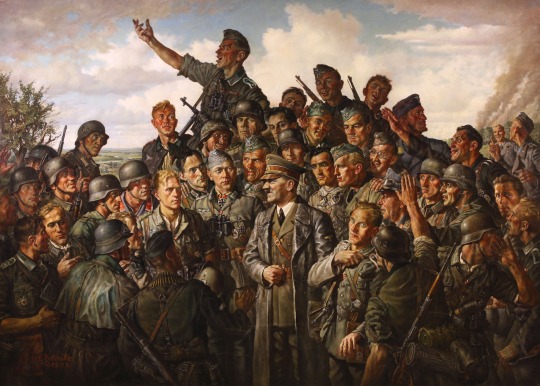
Hitler an der Front/Hitler at the Front (1943) by Emil Scheibe
14 notes
·
View notes
Text
Nazi Party, political party of the mass movement known as National Socialism. Under the leadership of Adolf Hitler, the party came to power in Germany in 1933 and governed by totalitarian methods until 1945. Anti-Semitism was fundamental to the party’s ideology and led to the Holocaust, the systematic, state-sponsored killing of six million Jews and millions of others.
0 notes
Text
Can It Happen Again?
As I was reading about events in Germany this past weekend, I had a sense of déjà vu. A sense that … wait … this sounds very familiar.
Given Germany’s dark history under Nazi rule, it would be the last place I would expect to see a far-right group similar to both the Nazi Party of the 1930s-1940s and even our own Republican Party today gain popularity in Germany, but that is exactly what is…
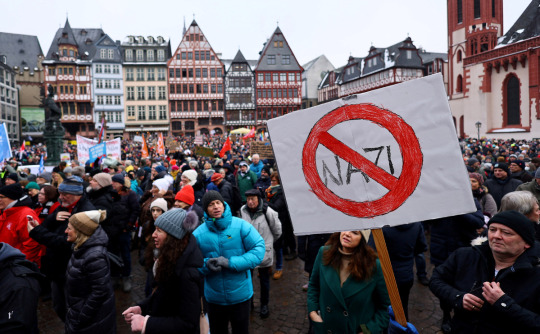
View On WordPress
#Correctiv investigative report#Germany&039;s AfD Party#Martin Sellner#Nazi Party#re-migration#Secret Meeting in Potsdam
0 notes
